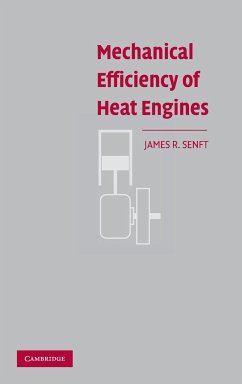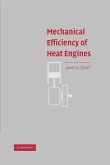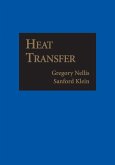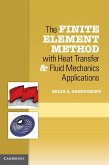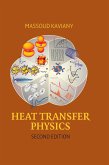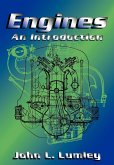This book presents a newly developed general mathematical theory of the mechanical efficiency of heat engines.
This book presents a newly developed general conceptual and basic quantitative analysis of the mechanical efficiency of heat engines. The book works out the theory at a level of ideality and generality compatible with the treatment given to thermal efficiency by classical thermodynamics. This yields results of broad bearing concerning the overall cyclic conversion of heat into usable mechanical energy. Most notably, the work reveals intrinsic limits on the overall performance of reciprocating heat engines. The ideal Stirling engine is shown to have the best overall performance potential of all possible engines under ideal comparable assumptions. The work provides mathematically explicit upper bounds on the mechanical efficiency and cyclic work output of engines having like characteristics. The theory describes the general effects of parameters such as compression ratio and external or buffer pressure on engine output. It also provides rational explanations of certain operational characteristics such as how engines generally behave when supercharged or pressurized.
Table of contents:
1. Energy transfers in cyclic heat engines; 2. Mechanism effectiveness and mechanical efficiency; 3. General efficiency limits; 4. Compression ratio and shaft work; 5. Pressurization effects; 6. Charge effects in ideal Stirling engines; 7. Crossley-Stirling engines; 8. Generalized engine cycles and variable buffer pressure; 9. Multi-workspace engines and heat pumps; 10. Optimum Stirling engine geometry; 11. Heat transfer effects; Appendix A. General theory of machines, effectiveness, and efficiency; Appendix B. An ultra-low temperature differential Stirling engine; Appendix C. A temperature differential Stirling engine; References.
Hinweis: Dieser Artikel kann nur an eine deutsche Lieferadresse ausgeliefert werden.
This book presents a newly developed general conceptual and basic quantitative analysis of the mechanical efficiency of heat engines. The book works out the theory at a level of ideality and generality compatible with the treatment given to thermal efficiency by classical thermodynamics. This yields results of broad bearing concerning the overall cyclic conversion of heat into usable mechanical energy. Most notably, the work reveals intrinsic limits on the overall performance of reciprocating heat engines. The ideal Stirling engine is shown to have the best overall performance potential of all possible engines under ideal comparable assumptions. The work provides mathematically explicit upper bounds on the mechanical efficiency and cyclic work output of engines having like characteristics. The theory describes the general effects of parameters such as compression ratio and external or buffer pressure on engine output. It also provides rational explanations of certain operational characteristics such as how engines generally behave when supercharged or pressurized.
Table of contents:
1. Energy transfers in cyclic heat engines; 2. Mechanism effectiveness and mechanical efficiency; 3. General efficiency limits; 4. Compression ratio and shaft work; 5. Pressurization effects; 6. Charge effects in ideal Stirling engines; 7. Crossley-Stirling engines; 8. Generalized engine cycles and variable buffer pressure; 9. Multi-workspace engines and heat pumps; 10. Optimum Stirling engine geometry; 11. Heat transfer effects; Appendix A. General theory of machines, effectiveness, and efficiency; Appendix B. An ultra-low temperature differential Stirling engine; Appendix C. A temperature differential Stirling engine; References.
Hinweis: Dieser Artikel kann nur an eine deutsche Lieferadresse ausgeliefert werden.

